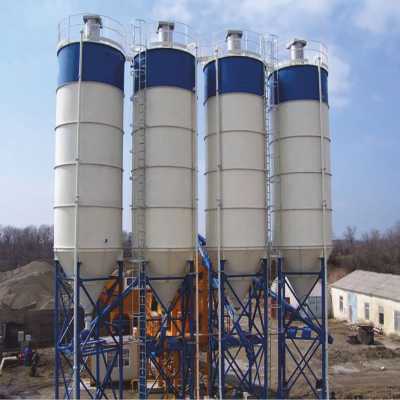Get In Touch
Get In Touch




A Bulker Unloading System is a specialized mechanism designed for the efficient and controlled discharge of bulk materials from large transport containers known as bulkers or bulk carriers. These systems are commonly used in industries such as agriculture, construction, and manufacturing. They typically consist of conveyor belts, augers, or pneumatic systems to transfer materials from the bulker to storage or processing equipment. Bulker unloading systems ensure a consistent and precise flow of materials, reducing manual handling and improving the safety and efficiency of bulk material handling operations. These systems are essential for industries relying on bulk materials to streamline their supply chain processes.
1. Type of Material: Specify the type of bulk material the system will handle, whether it's grains, cement, chemicals, or other substances.
2. Capacity: Define the system's capacity in terms of tons per hour or other relevant units, considering the specific material being unloaded.
3. Unloading Mechanism: Specify the unloading method, which can include belt conveyors, screw conveyors, pneumatic systems, or other appropriate mechanisms based on the material's characteristics.
4. Unloading Rate: Indicate the desired or achievable rate of unloading, which can vary based on the system's design and the material's flow properties.
5. Hopper Design: Describe the design of the receiving hopper, including its size, shape, and capacity, to accommodate the bulk material.
6. Dust Control: Include measures for dust control, which may involve dust collectors, baghouses, or other filtration systems to maintain air quality and prevent environmental issues.
7. Safety Features: Specify safety mechanisms, such as emergency stop buttons, safety interlocks, and guardrails, to ensure safe operation and protect personnel.
8. Power Requirements: Detail the power supply requirements, including voltage, phase, and power consumption for the entire system.
9. Control System: Specify the control mechanism, whether it's manual, automated, or PLC-based, and outline the user interface for operating the system.
10. Environmental Considerations: Include any environmental considerations, such as compliance with emissions regulations and containment systems for spill prevention.
11. Mobility: Determine if the system is stationary or mobile, depending on whether it's intended for a fixed location or transport to various sites.
12. Size and Dimensions: Provide the dimensions of the entire system, including the unloading equipment and the associated infrastructure.
13. Maintenance Requirements: Detail routine maintenance tasks, schedules, and procedures to keep the system in optimal working condition.
14. Weather Protection: If used in outdoor settings, specify any weather protection measures, such as shelters or covers to protect the system from environmental elements.
15. Customization: If the system requires customization for specific materials or industries, provide details on how it can be adapted.
16. Compliance: Ensure that the system complies with relevant industry standards, safety regulations, and local codes.
17. Testing and Acceptance Criteria: Define the testing procedures and acceptance criteria for the system, including performance testing and safety checks.
1. Agriculture: Used for unloading and conveying grains, seeds, fertilizers, and animal feed from bulkers into storage facilities or processing equipment on farms and in grain elevators.
2. Construction: Employed to unload bulk construction materials such as cement, sand, gravel, and aggregates from bulk carriers into silos, hoppers, or on-site mixing equipment at construction sites.
3. Mining and Minerals: Applied in the mining industry to handle materials like coal, ores, and minerals, transferring them from bulkers to crushers, conveyors, or processing plants.
4. Chemical Industry: Utilized for unloading and transporting bulk chemicals, powders, and granules, ensuring safe and controlled handling for chemical production processes.
5. Food Processing: Used for the transfer of bulk food products like flour, sugar, rice, and grains from bulk containers to processing equipment in food manufacturing plants.
6. Bulk Handling Terminals: Found in bulk cargo handling facilities, where they unload a variety of dry bulk materials (e.g., coal, ore, and grains) from bulk carriers for storage or further distribution.
7. Cement Industry: Integral for unloading bulk cement from cement carriers and transferring it to storage silos for subsequent use in the production of concrete and cement products.
8. Plastics and Resins: Applied in the handling of plastic pellets, resins, and polymers, ensuring a consistent supply of raw materials to extruders and molding machines.
9. Renewable Energy: Used in the unloading of biomass materials like wood chips, pellets, or agricultural residues from bulkers for use in biomass power plants and renewable energy production.
10. Waste Management: Employed in waste-to-energy facilities to unload and convey waste materials like RDF (Refuse-Derived Fuel) from waste bulkers to incinerators or waste-to-energy plants.
11. Pharmaceuticals: Applied for the safe and contamination-free unloading of bulk pharmaceutical ingredients and powders for use in drug manufacturing.
12. Chemical Distribution Centers: Used in facilities that distribute chemicals in bulk to various industries, ensuring efficient and precise unloading for clients.
13. Rail and Port Terminals: Found at rail yards and port terminals to efficiently unload dry bulk cargo from railcars and ships into storage facilities or for further transportation.
14. Petrochemical Industry: Utilized for the handling of bulk petrochemical products, such as plastic resins and petrochemical powders, during production processes.
15. Fertilizer Industry: Applied for the unloading of bulk fertilizers like urea, ammonium nitrate, and potash from bulk carriers for use in agricultural applications.


